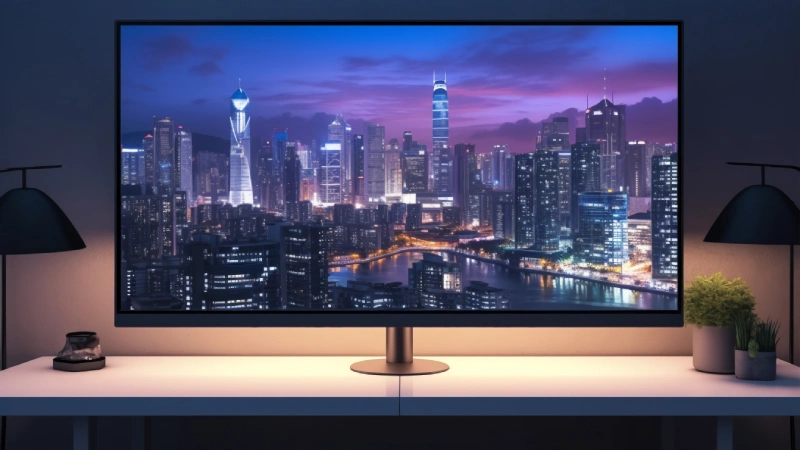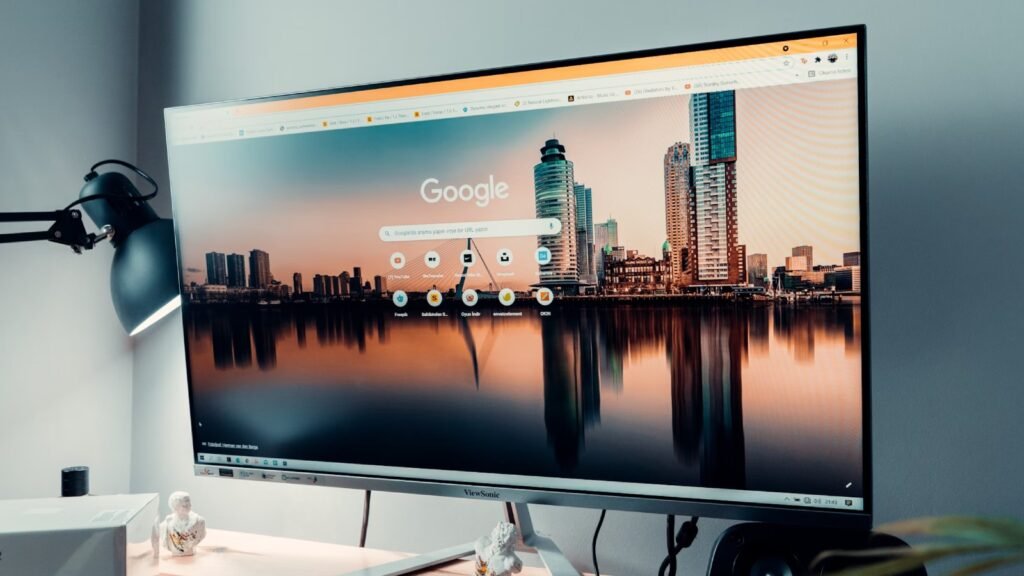Table of Contents
Highlights
- MicroLED vs OLED vs MiniLED in 2025 shows three competing display technologies, each with distinct strengths in brightness, contrast, and durability.
- MicroLED leads in brightness and lifespan, OLED offers the best black levels and viewing angles, while MiniLED provides strong brightness and value.
- Choosing between MicroLED vs OLED vs MiniLED depends on price, room lighting, content type, and long-term usage needs.
The panels of 2025 are at war with three distinct technologies – MicroLED, OLED, and MiniLED. Each of these technologies has strengths, but a weakness as well. It gets complicated to not just pick a brand, but to understand the technology behind the brand. This article provides another look into the features and functions of these three technologies.
Understanding MicroLED
MicroLED is at the forefront of display technology and rapidly emerging as an affordable technology. Unlike OLED, which has organic compounds in each pixel, MicroLED uses inorganic LEDs, leading to different benefits.

Brightness and Contrast
MicroLED panels can be extremely bright and easily exceed 1,000-nits of brightness and are best suited in bright indoor environments or outdoor displays. MicroLED can also achieve nearly infinite contrast ratios since each pixel produces its own light.
Color Fidelity and Durability
Because MicroLED uses inorganic materials, there is hardly any color decay over time, and high-quality color can last for years. MicroLED displays are practically immune to burn-in – unlike OLED technology – and can be used continuously in virtually any commercial environment, or high-end home theater environment.
MicroLED Limitations
Although MicroLED has many benefits, there are a few drawbacks:
- High Cost Of Production: MicroLED panels are much more complicated to produce than OLED or MiniLED displays, and therefore are much more expensive than those options.
- Only Available In Large Sizes: Right now, MicroLEDs are still mostly available in very large sizes, likely to be 100 inches or larger, and many people will not have a use case for even a larger screen size.

Recognizing OLED
OLED (Organic Light Emitting Diode) OLED (Organic Light Emitting Diode) technology is nearly a decade old now, and the image quality is astounding.
Unbelievable Black Levels
The pixels in an OLED panel emit their own light, so when you’re looking at a pixel that is not lit, it is simply black, because it is not emitting its own light.
Flexibility and Viewing Angles
OLED panels are very thin and flexible and which allows for more creative designs, from the curve of the image to a rollable screen.
They maintain a consistent color and brightness in all view angles, which allows watching with your friends and family – living with the OLED offering the best viewing experience is very attractive
Disadvantages of OLED
Despite the many advantages of OLED, there are a couple of disadvantages:
- Burn-In: Any static image can remain on screen permanently, like the HUD in a video game, or a news ticker.
- Moderate Brightness: While OLED Panels can be very bright, they usually do not reach the same brightness as MicroLED or MiniLED panels.
- Lifespan: As organic materials degrade over time, color accuracy and brightness may decrease after use over a few years.

An Overview of MiniLED
MiniLED is an advanced type of conventional LED-LCD technology. MiniLED uses thousands of small LEDs for its backlight instead of the traditional LED-LCD panel that uses fewer LEDs for its backlight. MiniLED enables more from local dimming zones than conventional LED-LCD.
Brightness and contrast
MiniLED TVs can provide elevated brightness than OLED TVs, which means that MiniLED TVs are a very strong option to consider in bright rooms with a natural light source. Moreover, local dimming zones can improve contrast to a standard LED panel, producing its depth of black and great color in dark scenes.
Burn-in resistant and lifespan
MiniLED televisions use LCDs to produce the image. Therefore, the display is not subject to burn-in, unlike the typical OLEDS experience. The lifespan of these televisions is about a decade on average; therefore, you see MiniLED as possibly a long-term experience.
MiniLED Limitations
Although MiniLED has improved function, it does have its shortcomings, namely:

- Black Levels: MiniLED can get better black levels than standard LED-LCDs, but does not have the same depth you will see in OLED or MicroLED displays.
- Color Accuracy: MiniLED is good on color accuracy, but in dark scenes, it struggles.
- Viewing Angles: Unlike OLED, the viewing angles can cause diminished color and brightness depending on the angles of the viewer.
MicroLED vs. OLED vs. MiniLED: Complete Comparison
Below is a simple chart showing the differences:
| Feature | MicroLED | OLED | MiniLED |
| Brightness | Extremely High (1000+ nits) | Moderate | High |
| Contrast | Near-infinite | Excellent | Good |
| Black Levels | Deep | True black | Improved but not perfect |
| Color Accuracy | Excellent | Excellent | Good |
| Burn-In Risk | None | Yes | None |
| Lifespan | Long | Moderate | Long |
| Cost | Very High | Moderate | Low to Moderate |
| Screen Size Availability | Very Large (100+ inches) | Varies | Varies |
Real-World Use
MicroLED
Due to its impressive brightness, amazing contrast, and prevention of burn-in, MicroLED is best suited to home theaters and commercial installations. In the luxury installation or commercial display market, it will provide a remarkable experience with minimal time investment.

OLED
For gaming or film, OLED is still the go-to display choice.OLED demonstrates great use of perfect blacks and wide viewing angles in typical daily living room settings to replicate the theater experience at home. Just be cautious of traditional static images, as they lead to burn-in if there is enough time spent, especially in gaming or newsrooms.
MiniLED
MiniLED is flexible and usable for a typical living room or an office setting. Its impressive brightness and contrast make it suitable for bright spaces while not suffering from OLED’s burn-in issues. MiniLED will continue to permeate premium laptops and televisions.
Future Display Innovations
The next several years will be interesting, as we have a few display innovations happening.
- RGB MicroLED: An RGB MicroLED uses real RGB microLEDs at the pixel level to create colors and brightness similar to an RGB OLED screen. Samsung and Hisense are at different stages of prototype development and testing.
- Quantum Dot OLED (QD-OLED): This is a hybrid technology that combines the advantages of fully-emissive OLED technology while employing quantum dots for improved color accuracy and brightness.
- Low-Cost RGB MiniLED: Pricing across the board is getting lower each year with RGB MiniLED, perhaps making OLED be on the radar for a premium price point alternative, with a lower cost technology coming in.

How to Evaluate the Correct Display in 2025
When choosing between Micro LED, OLED, and MiniLED, consider these categories:
- Price: Micro LED displays are the most expensive, OLED displays are average to mid-range, and MiniLED displays are cost-effective.
- Environment: Bright rooms will benefit from Micro LED or MiniLED, while darker rooms will benefit from an OLED.
- Type of Content: Gaming and movies will benefit from OLED or Micro LED, as both display options provide deeper blacks. Office and general use will work well with MiniLED.
- Longevity and Maintenance: Micro LED and MiniLED tend to last longer with no risk of burn-in.

Conclusion
In 2025, MicroLED, OLED, and MiniLED will all be available options in the market. MicroLED technology is brighter, has brighter contrast, and lasts longer than everything else. However, it is extremely expensive. OLED, often called W-OLED, offers the deepest blacks and a great cinematic experience, but it can also suffer from severe burn-in.
MiniLED provides a nice compromise of performance, price, and longevity, making it a viable solution for most consumers. Keeping up with display technology means you will invest in a screen capable of good performance for many years to come; you will want to ensure you are making the correct purchase value that meets your needs above other products.
Please leave your comments or any experience you have had to assist your fellow readers when choosing their displays.